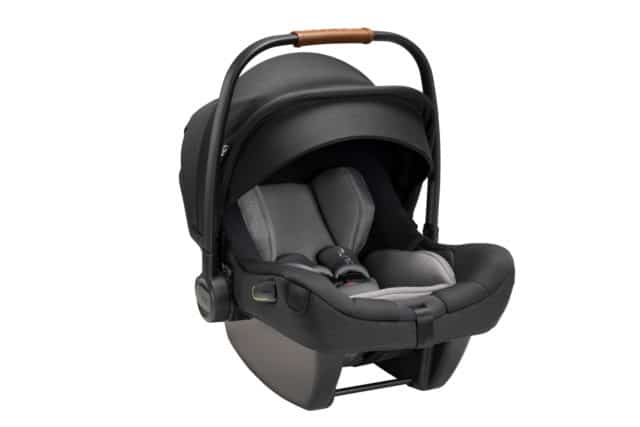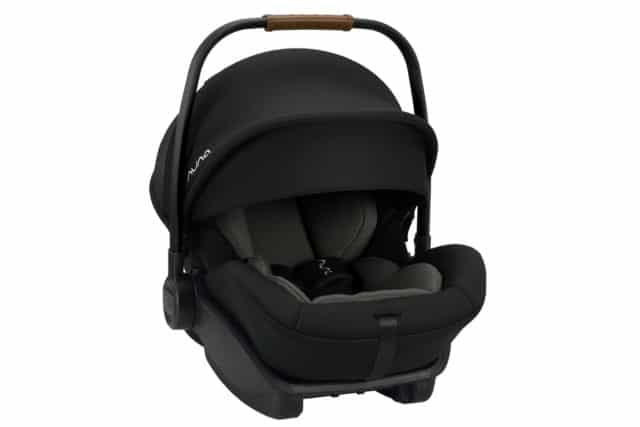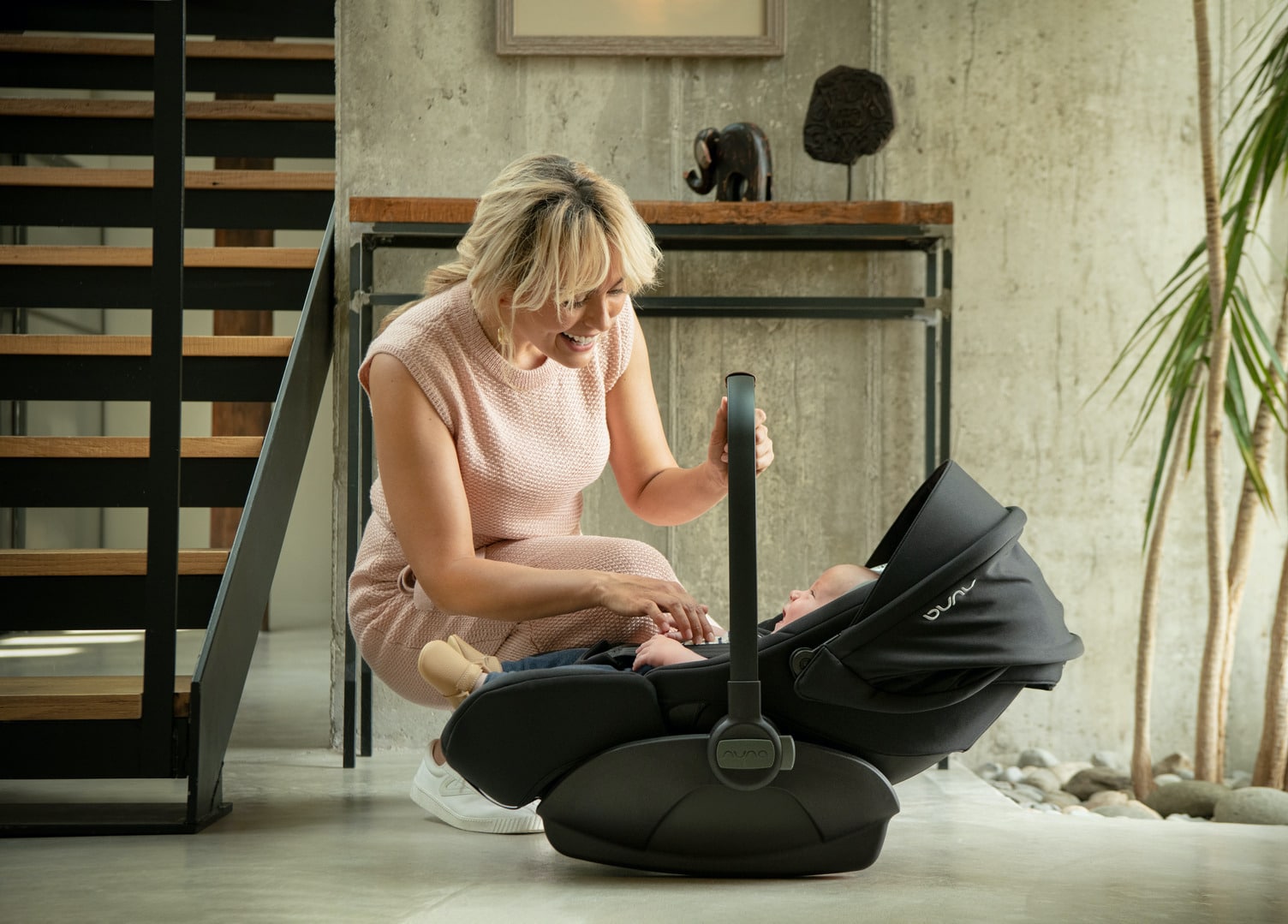Why choosing a non-toxic car seat is better for your little one's health and the environment...
When you’re choosing a car seat for your little one, the number one priority for most parents is, of course, going to be safety. Whilst you’re checking if your chosen car seat meets the latest i-Size guidelines, it’s also important to look at what it’s made from. Many car seats contain toxic flame retardant chemicals and PDAS (aka ‘forever chemicals’), that can be harmful for your little one’s health and the environment. Thankfully, you can find a non toxic car seat in all types – from infant car seats to convertible car seats. Here’s what you need to know…
What makes a car seat ‘toxic’?
A recent study in the US found that more than half of children’s car seats tested for toxic flame retardants and PFAS contain the dangerous substances. The analysis was conducted by the Ecology Center, an environmental and consumer advocacy group.
Phosphorus and bromine-containing flame retardants are linked to cancer, diabetes, developmental disorders, endocrine disruption, and other serious issues.
PFAS, or per-and polyfluoroalkyl substances, are a class of around 9,000 compounds commonly used to make car seats water/stain/and grease-resistant. The chemicals are linked to cancer, liver problems, thyroid disease, decreased immunity, high cholesterol and more. They are often known as ‘forever chemicals’ due to their longevity in the environment. These harmful substances can be breathed in or ingested as they break off from the materials that they are applied to – as chemical flame retardants do not bind well to the products they are used on. They can also be absorbed more easily by your little one’s skin, which is thinner than adult skin.
55% of the 22 US seats tested as part of the study contained phosphorus-based flame retardant in the upholstery, and nine also contained bromine in the upholstery or foam. Some good news is that the EU recently changed its 50-year-old flame retardant standard that was previously based on US rules. Therefore the study found that car seats purchased in the EU did not contain phosphorus-based flame retardants – even when the same product sold in the US did. However, several EU seats contained bromine (although this could be in the foam that is covered by the upholstery). And four seats marketed as water/stain-resistant did contain PFAS.
Why do some car seat manufacturers use toxic chemicals?
All car seats on the UK market must meet flammability requirements and fire retardant (FR) chemicals can be applied to fabrics in order to meet these performance standards. However, regulators have admitted that there is no evidence of an increased safety benefit from using these chemical flame retardants in car seats.
Thankfully, some car seat companies, including Nuna, recognise how harmful these chemicals are and are making car seats with alternative materials. All Nuna car seats offer safety and comfort with style and the entire range is non-toxic.

What makes a car seat ‘non-toxic’?
Non toxic car seats are made without flame retardants, PFAS, and other harmful chemicals such as heavy metals, PVC (aka vinyl) plastic, and antibacterial agents like triclosan. Instead, they use eco-friendly, flame retardant free materials with inherent flame-resistant qualities that meet the UK flammability requirements. This makes them much safer for children and the environment.
Nuna is one of the leading brands making non-toxic car seats. From car seat fabrics, to foam, and beyond, the brand takes sourcing very seriously. They do not add any fire-retardant chemicals, (this includes harmful tris and halogenated FR chemicals), and only use high end non-toxic materials.
What materials do non toxic car seats use?
One of the materials used by Nuna is Merino wool, as it provides the perfect mix of performance, comfort, and style, whilst being naturally flame resistant. Obtaining exclusively FR-free materials is no easy task, especially when it comes to fabrics, and Nuna’s fabric team doesn’t settle there. Through their comprehensive approach, they take into consideration the practicality of the fabric based on where it will be used on the seat, for example some areas of the seat require durable fabrics, while the sections that baby touches need lightweight fabrics that will be soft and comfy.
The brand says: “Procuring something gorgeous customers will be proud to travel with is essential, too. Staying true to Nuna’s commitment to craft gear that is better for baby, the fabric team had to do a bit of trailblazing because searching for FR-free materials means taking a step further than the status quo of the industry standard. When they discovered a beautiful fabric that passed the regulated test for fire resistance, they struck gold!”
Manufacturers can also meet the flammability regulation, without using toxic chemicals, by using materials with a special weave on their car seat covers.
Our top three non-toxic car seat picks
Here are our top non toxic car seat picks. All three of these non-toxic car seats from Nuna are compatible with the BASE™ next.

- Nuna PIPA™ next
At just 2.8kg, the PIPA™ next is lightweight, protective and portable, making it the perfect travel companion. It’s i-Size-approved and designed with all the details that make for a cosy ride, like an adjustable headrest with no-rethread harness, a Dream drape™, and superior side impact protection on the base with built-in wings that automatically deploy when the car seat is installed.

2. Nuna CARI™ next
The super comfortable CARI™ next allows baby to lay peacefully at a full recline – the best position for a developing spine. This NEXT system compatible carry cot features an organic jersey mattress and infant inserts that add comfort and a three-point harness that adds security. You can travel from home, to car, to pushchair, while they head off to dreamland. Doubling as a car seat and a carry cot, their sleep won’t be interrupted as they lie flat in the CARI™ next.

3. Nuna ARRA™ next
Perfect for long journeys and busy days out and about, the Nuna ARRA™ next provides a smooth transition from crib to carrier. Its three recline positions allow your baby to lie comfortably, whether ARRA next is secured on the base in the backseat or attached to a pushchair. It’s i-Size-approved and also lightweight. This reclining carrier is super comfortable for little ones, and ideal for napping on the go.
A car seat buying checklist
- Choose a trusted car seat manufacturer and make sure you do your research about what materials they use to make their products.
- Make sure your chosen non toxic car seat meets the latest i-Size safety standards. i-Size is a European safety standard for baby and child car seats. It’s part of ECE R129, is replacing the old safety regulation R44/04.
- Check your car has isofix fixing points and find a retailer who is able to help you test several different car seat options in your car.
- If your little one is likely to travel in another car regularly, make sure your chosen car seat will fit in their car too.
- Make sure you choose a car seat that is appropriate for your child’s age, height, and weight. A car seat that’s too big or small for your child won’t be safe.
- Don’t buy a secondhand car seat. You won’t be able to totally guarantee that it hasn’t been in a car crash, or hasn’t got missing parts. It might also not be the most user friendly model, or fit your car properly.
- Think about how you’ll be using your infant car seat – if you’ll be lifting it in and out of the car a lot with your baby in it, choose a lightweight design. If it’s for an older child, then you might want to look at booster seats. For something that grows with your child, look for a convertible car seat.
- Rear face your baby until they are at least 15 months old. Rear facing is safer for your baby in the event of a collision. Rearward-facing seats can be used in the front or rear of the car – but it is much safer to put them in the rear. Don’t put car seats in the front passenger seat if there is an active passenger airbag.
This is a sponsored post created in collaboration with Nuna
For more tips and reviews, click here.






COMMENTS ARE OFF THIS POST